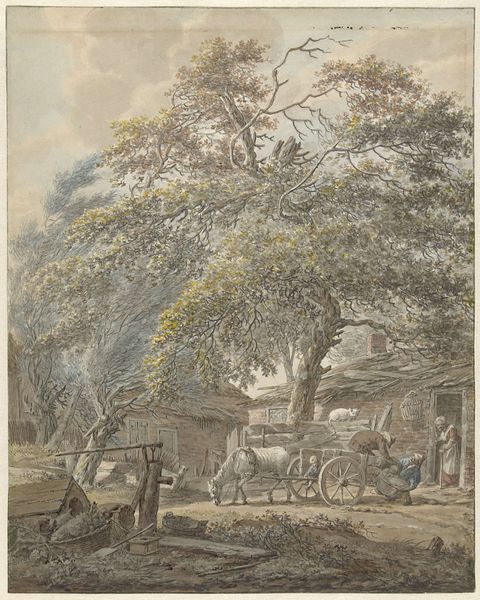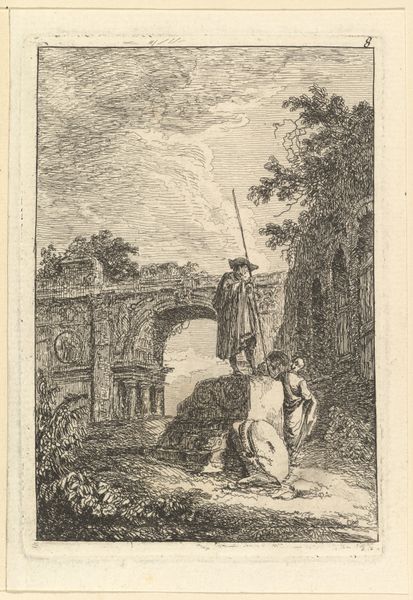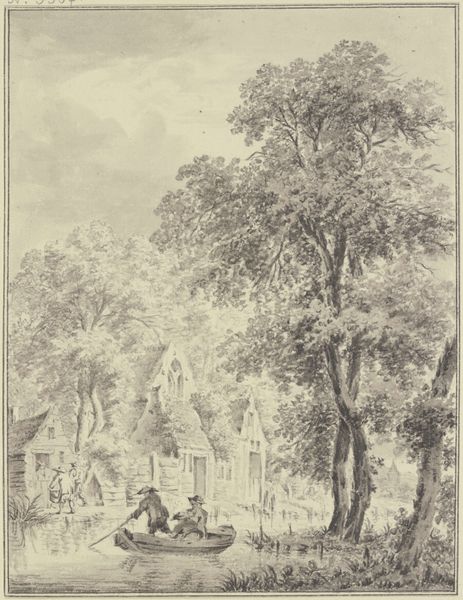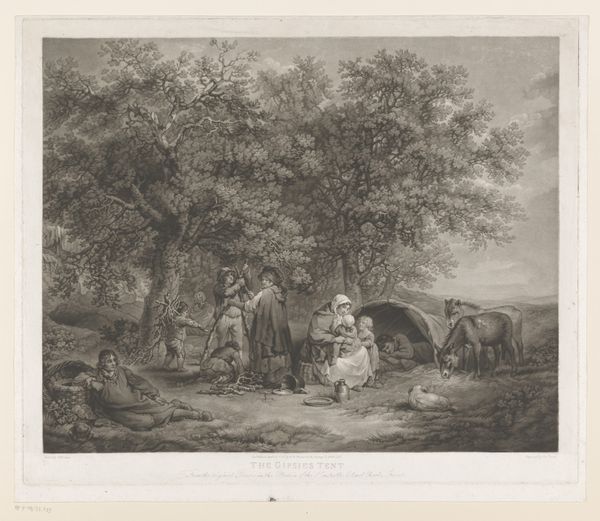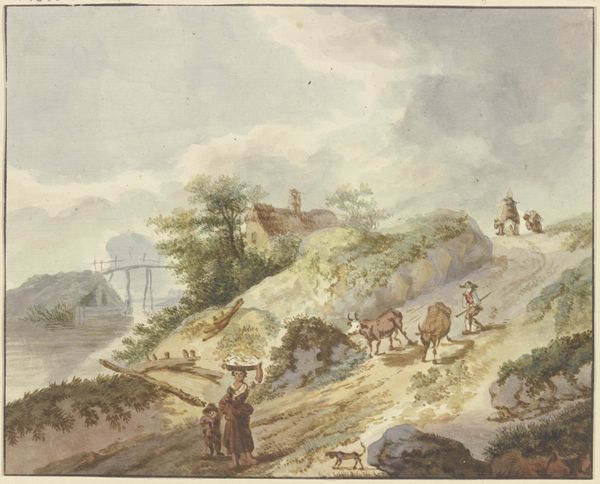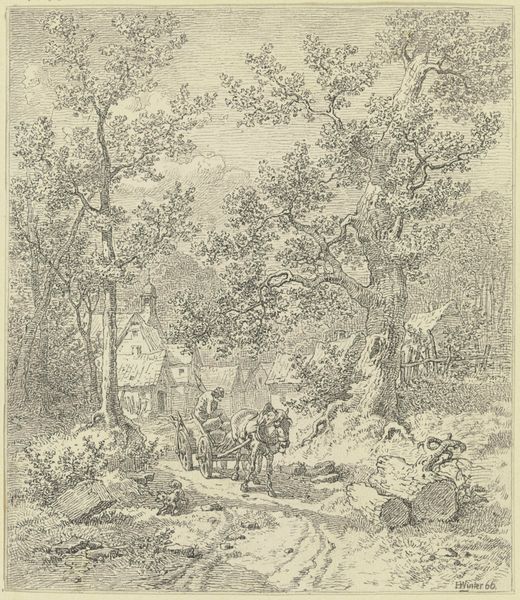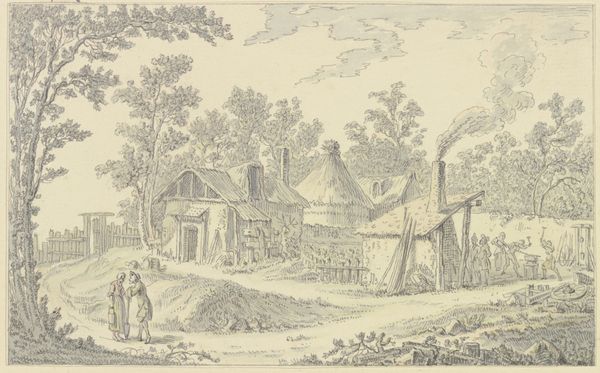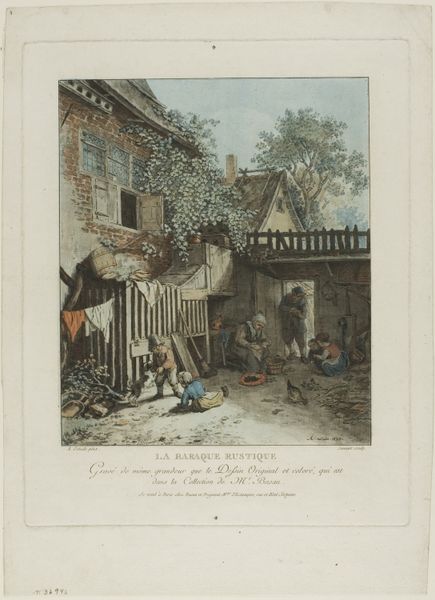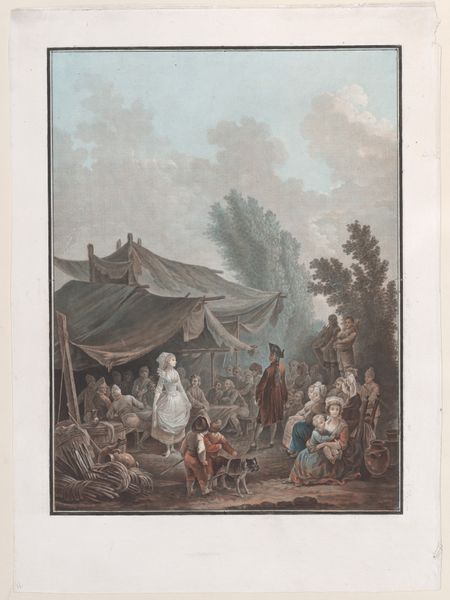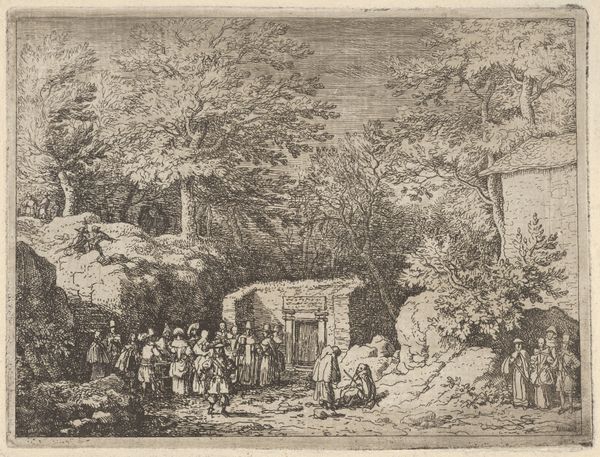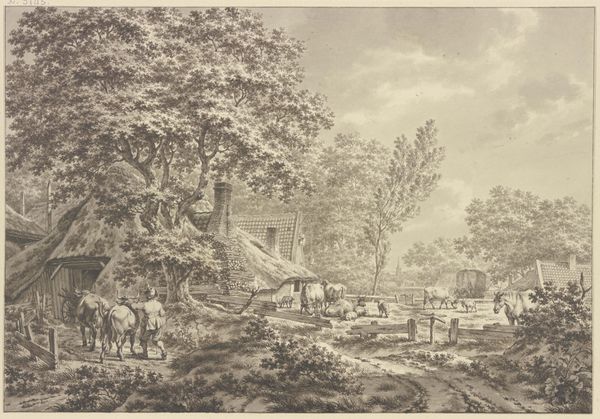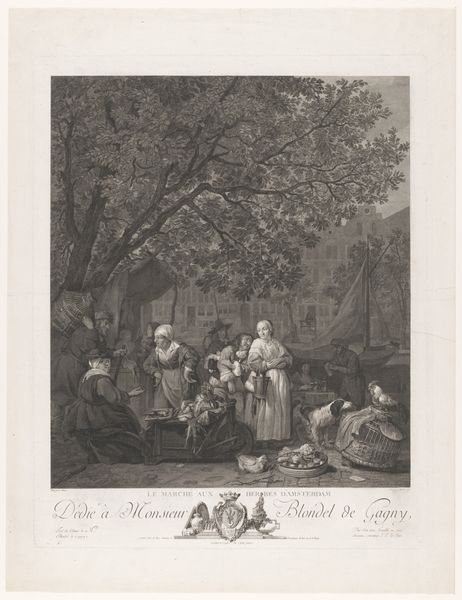
drawing, paper, watercolor, ink, chalk, graphite
#
drawing
#
pencil sketch
#
landscape
#
paper
#
watercolor
#
ink
#
pen-ink sketch
#
chalk
#
15_18th-century
#
graphite
#
genre-painting
#
watercolor
Copyright: Public Domain
Curator: Here we have a scene titled "Streitszene mit landfeiner Dame auf der Dorfstraße"—that is, "Argument with a Country Lady on the Village Street"— rendered with ink, watercolor, graphite, chalk, and pencil on paper. The piece resides here at the Städel Museum. Editor: It evokes such a contained yet simmering energy. The palette, dominated by greys and pale yellows, lends a muted quality that paradoxically amplifies the implied tension in the figures' postures. What exactly is going on here? Curator: Exactly. The beauty lies in its structural arrangements. Note how Wille uses the tree on the left and buildings to create a stage-like setting. Three figures are clustered in the center, almost as if caught mid-performance. Editor: These power dynamics feel pronounced. I’m curious about the lady’s dress in relation to the garb of the two women she’s seemingly confronting. Is this about class, or social expectations? What specific societal narratives were playing out at the time? Curator: Those narratives certainly affect interpretation. However, structurally speaking, Wille frames the entire scene within a meticulously crafted landscape. The road directs the viewer’s eye. Consider how the light filtering through the trees creates patterns, how his chosen medium builds visual depth. Editor: Absolutely, I recognize all that, and this formal construction tells a very important story too! And what about the water pump on the left, or the crumbling house to the right? Are these props symbolic of something broader like a period of political and social turmoil? Curator: Regardless, observe the strategic deployment of line and wash; Wille’s precise rendering is designed to lead our gaze to specific parts of the composition. Editor: Right, focusing solely on the composition. Thank you. Looking beyond the purely aesthetic qualities allows a richer interpretation, connecting the work to the wider societal discourse prevalent when the art was being produced. Curator: Perhaps so, but these precise details ultimately complement each other, and it's difficult to divorce the scene before us from its compositional technique. Editor: Thank you, this piece highlights how the drama that the artist tried to capture still has so much to say. Curator: Indeed, and for me, its complex simplicity offers so much within a relatively condensed visual space.
Comments
No comments
Be the first to comment and join the conversation on the ultimate creative platform.
